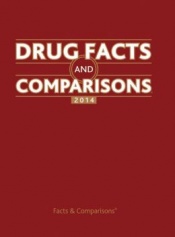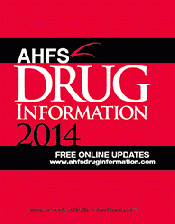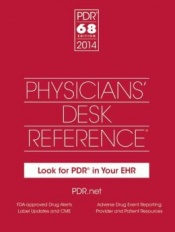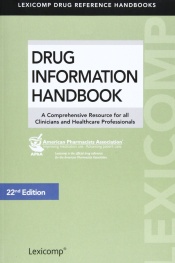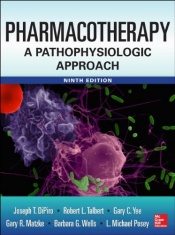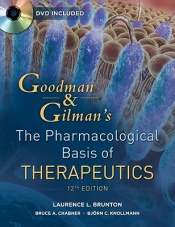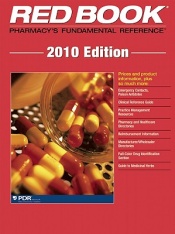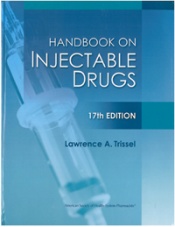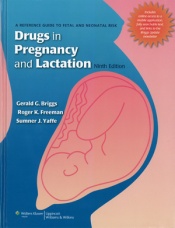Difference between revisions of "Drug information resources"
From Rx-wiki
(→Printed references) |
m (→Physician's Desk Reference) |
||
| Line 101: | Line 101: | ||
====Physician's Desk Reference==== | ====Physician's Desk Reference==== | ||
| − | [[Image:Pdr2014.JPG|thumb|175px]] | + | [[Image:Pdr2014.JPG|thumb|175px]]The ''Physician's Desk Reference'' provides information on: |
Approved FDA product information | Approved FDA product information | ||
Equivalent to package insert | Equivalent to package insert | ||
Revision as of 11:49, 10 December 2013
Please be patient as this article is still being written
Various types of pharmacy publications and references have different characteristics. These can typically be broken into categories based on the following criteria:
- pharmacy literature which is based on how far removed it is from the original research (primary, secondary, and tertiary); and
- material based on format (books, articles, websites, etc.).
This article provides an overview of these types of resources along with some commonly used references. The mention of any particular reference is not intended as an official endorsement, but simply recognition of its common use.
Contents
- 1 Legal Aspects
- 2 Pharmacy literature
- 3 Common references
- 3.1 Printed references
- 3.1.1 Drug Facts and Comparisons
- 3.1.2 AHFS Drug Information 2013
- 3.1.3 Physician's Desk Reference
- 3.1.4 Martindale: The Complete Drug Reference
- 3.1.5 Drug Information Handbook
- 3.1.6 Pharmacotherapy A Pathophysiologic Approach
- 3.1.7 Applied Therapeutics: The Clinical Use of Drugs
- 3.1.8 Goodman and Gilman's Pharmacological Basis of Therapeutics
- 3.1.9 Red Book
- 3.1.10 Trissel's Handbook on Injectable Drugs
- 3.1.11 King's Guide to Parenteral Admixtures (“Cutter” Guide”)
- 3.1.12 Drugs in Pregnancy and lactation (Briggs)
- 3.1.13 Medications and Mothers' Milk (Hale)
- 3.2 Online references
- 3.3 Smart phone and tablet applications
- 3.1 Printed references
- 4 See also
- 5 References
Legal Aspects
Pharmacies should be aware of any requirements made of them with respect reference materials, both to avoid any citations for noncompliance and in order to provide an appropriate level of assurance that they are providing proper medication therapy.
On the federal level, there are currently no specified requirements for pharmaceutical references. The federal government has opted to leave these requirements up to each state.
States, as would be expected have a wide variety of requirements, depending on which state you are in, and what kind of practice setting you are in (community, institutional, mail order, etc.). To let's look at the reference requirements for Pennsylvania and California in order to get an idea of what states require.
Pennsylvania Chapter 27 State Board of Pharmacy:
An adequate reference library which meets the following standards:
(i) Enables a pharmacy to prepare and dispense prescriptions properly, consistent with its scope of practice.
(ii) Includes reference sources appropriate to the type of pharmacy practice at that particular location. A pharmacy shall include in the pharmacy’s library current material regarding the technical, clinical and professional aspects of practice with emphasis in the area in which the pharmacy specializes.
(iii) Enables the pharmacist to compound medications in a safe and effective manner consistent with accepted standards of pharmacy practice.
(iv) Lists the possible drug interactions and possible adverse effects of medications dispensed by the pharmacy.
(v) Lists the therapeutic equivalents for medications.
(vi) Lists the therapeutic usage and dosages of medications dispensed by the pharmacy.
(vii) Provides guidelines for the counseling of patients.
(viii) A pharmacy that specializes in nuclear or parenteral prescriptions may limit the library it maintains under subparagraph (ii) relating to the pharmacy’s own specialization.
(ix) Maintains the latest editions including current supplements of each of its reference sources.
California 2013 Lawbook for Pharmacy:
1751.8. Sterile Injectable Compounding Reference Materials.
In any pharmacy engaged in compounding sterile injectable drug products, there shall be current and appropriate reference materials regarding the compounding of sterile injectable products located in or immediately available to the pharmacy.
Whichever state(s) your pharmacy is practicing in, make sure your pharmacy is in compliance.
Pharmacy literature
Scholarly fields, such as pharmacy, requires much research, means for cataloging/indexing the research, and eventually compilations from the various research studies. All aspects should involve competent professionals capable of properly interpreting the information.
Primary
Primary literature provides direct access to the most current information resulting from contemporary research. It is the largest and most current source of information. This type of literature includes original reports of scientific, clinical, technological, and administrative research projects and studies.
Examples of primary pharmacy literature includes peer reviewed journals such as the New England Journal of Medicine (http://www.nejm.org), the American Journal of Health-System Pharmacy (http://www.ajhp.org), and the International Journal of Pharmaceutical Compounding (http://www.ijpc.com). For additional pharmacy journals, a list of popular pharmacy journals can be found at http://www.pharmacy.org/journal.html.
Secondary
Secondary literature involves the interpretation and evaluation of information derived from or in reference to the primary literature sources. This secondary literature takes the primary literature and synthesizes, generalizes, and integrates new research.
Examples of secondary literature includes review articles, systematic reviews, meta-analyses and reference works. Secondary literature also includes indexing and abstracting services. PubMed (http://www.ncbi.nlm.nih.gov/pubmed) and The Cochrane Library (http://www.thecochranelibrary.com) are common examples of secondary literature.
Tertiary
Tertiary literature references are condensed works based on primary and secondary literature, such as textbooks, encyclopedia articles, and guidebooks or handbooks. The purpose of tertiary literature is to provide an overview of key research findings and an introduction to principles and practices. These are the types of references most commonly used in both the classroom and pharmacy environment.
Some common examples of these are the Drug Information Handbook (http://webstore.lexi.com/Drug-Information-Handbook), Micromedex (http://www.micromedex.com), and Drug Facts and Comparisons (http://www.factsandcomparisons.com).
Common references
Depending on the types of information specifically needed, along with accessibility and individual preference, a particular format or specific resource may be better suited. With that in mind there are numerous books, websites, and dedicated applications to help ensure that professional have access to the necessary information. The listing below are not intended to be exhaustive, but simply to detail some of the more commonly used references.
Printed references
Print references usually offer some reasonable advantages over other types of media in that they are available off-line, relatively easy to navigate, and a format that most people are comfortable using. Conversely, a disadvantage is that most of them are limited to annual updates (although some publish monthly updates that would need to be inserted). In a dynamic field like pharmacy this can be a concern.
Some of the books listed below are very broad in subject matter (Drug Facts and Comparisons) while others are more specialized in their content (Drugs in Pregnancy and Lactation). As previously mentioned, any references listed are not intended as recommendations, but are simply being highlighted because they are commonly used.
Drug Facts and Comparisons
Drug Facts and Comparisons provides the following drug information:- medication availability,
- drug formulations,
- general dosing guidelines,
- adverse drug reactions,
- phamacokinetics,
- drug interactions,
- general pharmacology,
- indications,
- over the counter drugs,
- the alcohol content of drugs, and
- sugar-free liquid preparations.
The Drug Facts and Comparisons also provides information on manufacturers' phone numbers and diagnostic aids. The print version can receive monthly updates to ensure current content. There is also an online version of this available as a subscription service. The online version is discussed further in the online drug information resource section.
AHFS Drug Information 2013
The AHFS Drug information provides the following drug information:- medication availability,
- drug formulations,
- general dosing guidelines,
- adverse drug reactions,
- drug interactions,
- general pharmacology,
- indications,
- over the counter drugs,
- unlabelled (off-label) uses, and
- immunizations.
The AHFS Drug information is broken into sections divided by drug classifications. The print version is updated annually with a new edition. It is also available through online subscription and through specific apps for Android and iOS.
Physician's Desk Reference
The Physician's Desk Reference provides information on:Approved FDA product information Equivalent to package insert Tablet/capsule identification Manufacturer's recommendations on dosing and telephone numbers
Martindale: The Complete Drug Reference
Provides information onAvailability, formulations, general dosing Half-lives, investigational drugs, manufacturer Foreign drugs, compatibility, adverse drug reactions, efficacy of drug therapy
Drug Information Handbook
Provides information onAvailability, formulations, general dosing, adverse drug reactions Pharmacokinetics, drug interactions, general pharmacology Indications Also available for smartphones such as the iPhone, Blackberry, and Android
Pharmacotherapy A Pathophysiologic Approach
Provides information onDisease state and most appropriate drug therapy Highly detailed therapeutic text
Applied Therapeutics: The Clinical Use of Drugs
Provides information onClinical use of drugs, clinical case, questions and answers for major disease states
Goodman and Gilman's Pharmacological Basis of Therapeutics
“Gold Standard” for Pharmacology textDeficient on information for clinical application
Red Book
Provides information onTablet/capsule identification, availability of drugs, sugar-free liquid preparations Manufacturers telephone numbers and addresses Average Wholesale Prices (AWPs) and Direct Purchasing prices of both legend and OTC products This product is also available on CDROM for MS Windows and can be integrated into Micromedex online subscription service.
Trissel's Handbook on Injectable Drugs
I.V. rates of administration, admixture compatibilitiesStability of parenteral medications Contains monographs on concentration, pH, dosing and administration Can be integrated into online version of Facts and Comparisons
King's Guide to Parenteral Admixtures (“Cutter” Guide”)
Provides information on compatibilities of parenteral admixturesDrugs in Pregnancy and lactation (Briggs)
Provides information onThe effects of drug use during pregnancy and breastfeeding Can be integrated into online version of Facts and Comparisons
Medications and Mothers' Milk (Hale)
Provides information onDrug use and breastfeeding
Online references
lorem
Smart phone and tablet applications
lorem
See also
References
- Types of Medical Literature, Mercer University Atlanta Swilley LibGuides: Updates to Colleges of Pharmacy and Health Professions Resources, http://mercer.libguides.com/content.php?pid=81289&sid=802112
- CHAPTER 27. STATE BOARD OF PHARMACY, The Pennsylvania Code, http://www.pacode.com/secure/data/049/chapter27/chap27toc.html
- 2013 Lawbook for Pharmacy, California Board of Pharmacy, http://www.pharmacy.ca.gov/laws_regs/lawbook.pdf
- Journals, Virtual Library Pharmacy, http://www.pharmacy.org/journal.html
